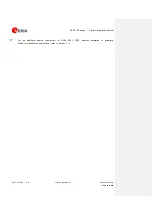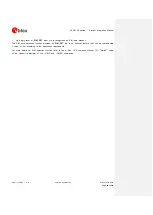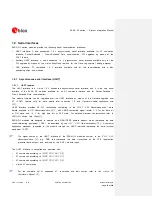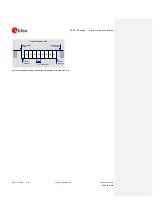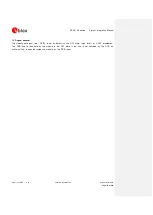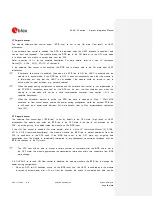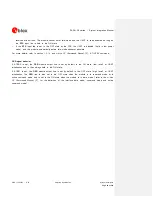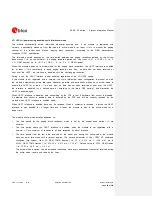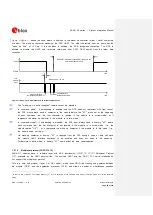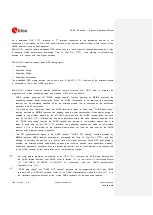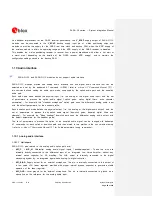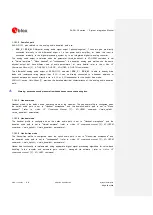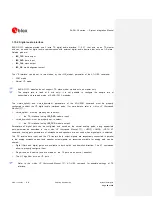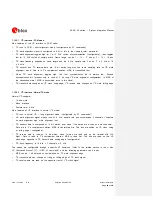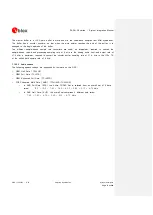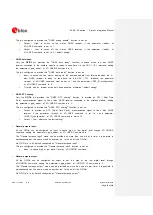
SARA-G3 series - System Integration Manual
UBX-13000995 - R06
Objective Specification
System description
Page 58 of 218
AT+UPSV=1: power saving enabled, cyclic idle/active-mode
The module automatically enters idle-mode whenever possible and, if the module is registered with
network, it periodically wakes up from idle-mode to active-mode for at least ~11 ms to monitor the paging
channel of the current base station (paging block reception), according to the GSM discontinuous
reception (DRX) specification.
The idle-mode period depends on the time period between two paging receptions defined by the current
base station (i.e. by the network): the paging reception period can vary from ~0.47 s (DRX = 2, i.e. 2
x 51 GSM frames) up to ~2.12 s (DRX = 9, i.e. 9 x 51 GSM frames)
When the module wakes up to active-mode for the paging block receptions, the UART interface is enabled
for at least ~11 ms concurrently to each paging reception and then, as data has not been received or
sent over the UART, the interface is disabled until the next paging reception.
During a call, the UART interface is kept enabled, regardless of the AT+UPSV setting.
If the module is not registered with a network, the cyclic idle/active-mode configuration is present as well:
the module automatically enters idle-mode whenever possible and periodically wakes up to active-mode to
enable the UART for at least ~11 ms and then, as data has not been received or sent over the UART,
the interface is disabled for a defined period (according to the latest DRX setting) and afterwards the
UART is enabled again.
When UART interface is disabled, data transmitted by the DTE is lost if hardware flow control is disabled.
If hardware flow control is enabled, data is buffered by the DTE and will be correctly received by the
module when UART interface is enabled again.
When UART interface is enabled, data can be received. When a character is received, it forces the UART
interface to stay enabled for a longer time and it forces the module to stay in the active-mode for a
longer time.
The module active-mode duration depends on:
The time period for the paging block reception, which is set by the current base station: ~11 ms
minimum
The time period where the UART interface is enabled, when the module is not registered with a
network: ~11 ms minimum of in absence of data reception by serial interface
The time period from the last data received at the serial port during the active-mode: the module
does not enter idle-mode until a timeout expires. The second parameter of the +UPSV AT command
configures this timeout, from 40 GSM TDMA frames (i.e. 40 x 4.615 ms = ~184 ms) up to
65000 GSM TDMA frames (i.e. 65000 x 4.615 ms = 300 s). Default value is 2000 GSM frames
(i.e. 2000 x 4.615 ms = ~9.2 s)
The active-mode duration can be extended indefinitely since every subsequent character received during
the active-mode, resets and restarts the timer.

